By Cynthia Unninayar
With his shop on Silom Road, the main gem and jewellery shopping street in Bangkok, Tanzim Khan is used to brokers and miners coming from around the world to sell him their gemstones. But one day, he was presented with a batch of unimpressive rough that he almost passed on.
“A man from Africa came in with a box of rough stones from a remote location in Kenya near the Somali border,” recalls Khan, adding that they didn’t look like much, yet there was something about them that intrigued the veteran gem dealer. “I knew they were sapphires, but they were unlike any I had ever seen. They had an underlying sheen.” He took a few samples and asked the man to return in a week.
Over the next few days, Khan worked with his cutters to facet the stones. “I saw something in them that was not apparent to my cutters, but we followed my instinct.” On the fifth day, after much experimentation to find the right orientation, the stones produced a unique asterism with a gold shimmer.
The results were so amazing that Khan began working with the miner and purchased the entire production. Five years later, in 2014, the mine was depleted. “In my 32 years in this business, I have never seen anything so exciting,” he declares, explaining that these new gems differ from conventional sapphires in that they exhibit a gold adularescence previously unknown in sapphires. “This appears to be caused by the gem’s molecular structure, which refracts and reflects light creating an iridescence giving the appearance of light emanating from within as well as shimmering on the surface when the gem is moved.”
To better understand these new stones, Khan had them tested at various laboratories, including GIA, AIGS, GIT, AGL, GRS, and SSEF. “The results showed they were a new species of sapphire, natural, with no enhancement, exhibiting a golden sheen,” he smiles. Khan then decided to name his new gem. In keeping with their shimmering appearance, he trademarked them internationally as Gold Sheen™ sapphires.
As word spread about this new find, articles began appearing in the trade media, including the Journal of Gemmology and Gems & Gemology. Encouraged by the response, Khan exhibited his gems at shows in Bangkok, Hong Kong, and Tucson, Arizona. “Not only did I sell a lot of stones, but I met many people who share my passion for these rare gems.”
Khan was delighted when a Gold Sheen™ sapphire ring, designed by William Travis Jewelry won the American Gem Trade Association Savor Silver Award for Men’s Wear. A short time later, the gems showed up in creations by David Yurman, Baer Jewels, and Brenda Smith—who devoted an entire collection to the unusual gem—as well as others around the world. “They are particularly appealing to designers who are looking for unique and rare, as no two stones are exactly alike,” comments Khan.
As Khan continued to experiment, he found that the stone exhibited more colours, namely blue, green, grey, pink, and even rare red and purple flashes between the gold when viewed from different angles in different cuts. The most popular is the cabochon, and nearly all exhibit some degree of asterism, with many displaying one or more six-rayed stars. Khan notes a strong demand for the checkerboard and the rose cut in various shapes. “We will make any cut that enhances the beauty of the stone,” he explains.
“Aside from their beauty, rarity, and uniqueness, all the stones are natural, unheated, and ethically sourced, with a known provenance,” affirms Khan. “They were found in one place, and the mine is now empty.” From a serendipitous meeting more than a decade ago, when Tanzim Khan took a chance on an unlikely gemstone, he continues to see collectors and jewellery designers globally going for the gold.
All images are courtesy of Tanzim Khan unless otherwise indicated.
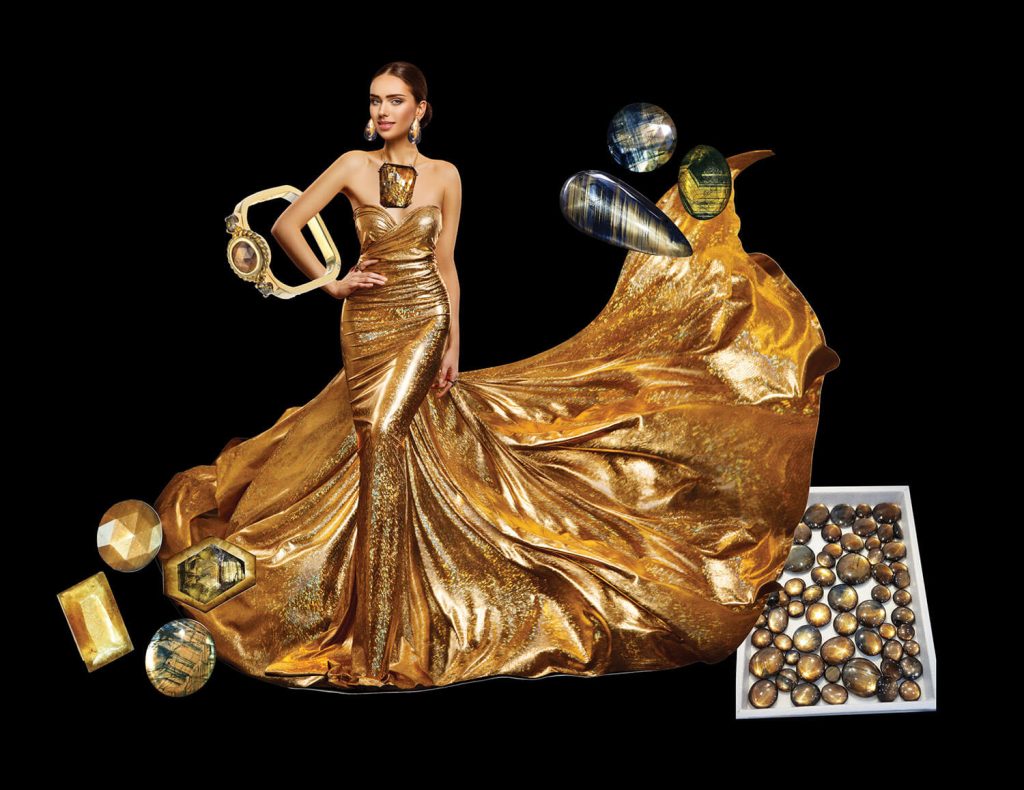
(Earrings on model) Two pear-shaped Gold Sheen™ sapphires with gold and brown tones.
(Pendant on model) Gold Sheen™ sapphire pendant showing the gem’s many intricate internal features.
(Ring on model) Ring set in gold with a Gold Sheen™ sapphire by Brenda Smith (USA). (Photo: Brenda Smith)
A selection of cabochon Gold Sheen™ sapphires, with most exhibiting six-rayed stars.
After experimentation, Khan discovered that the gem also exhibited blue tones with distinct internal patterns.
The gems can be cut in a variety of shapes to bring out their uniqueness.
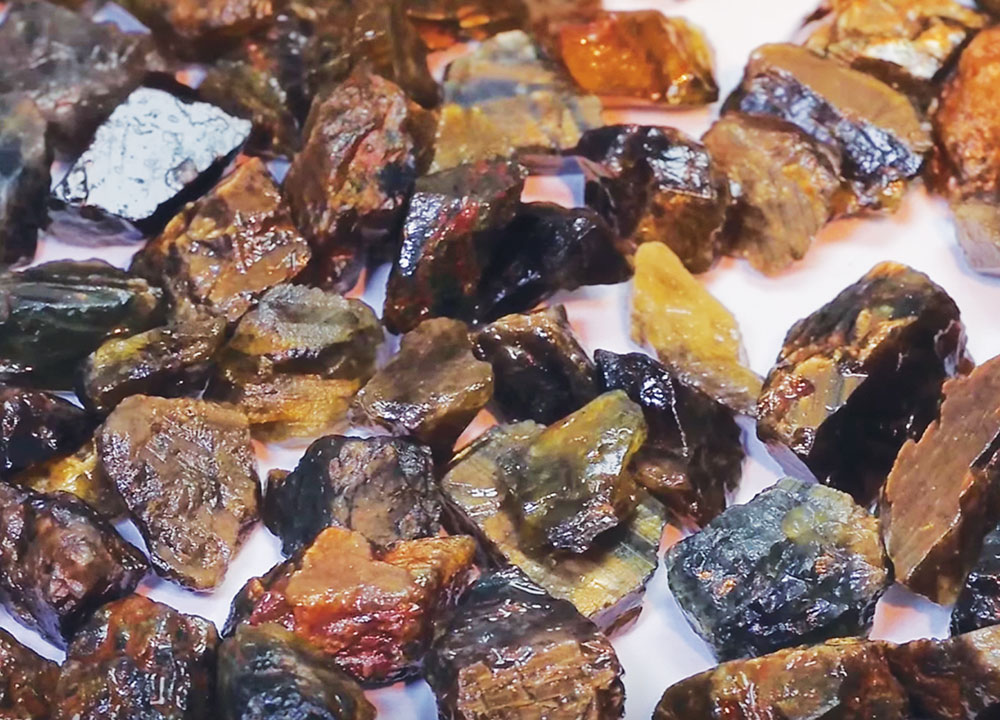
A batch of rough sapphire from Kenya that Tanzim Kim presented in 2009. After cutting and realising its beauty, he named this new species Gold Sheen™ sapphire.
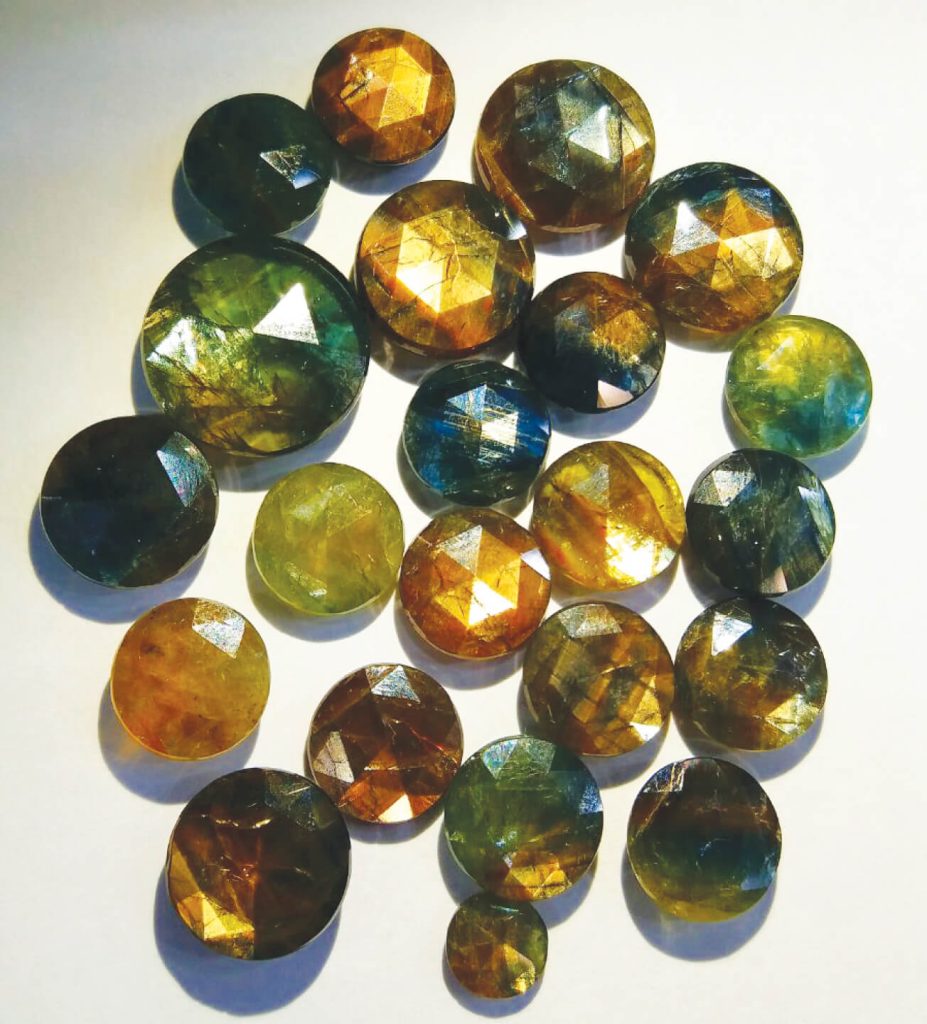
Some of the colours exhibited by Gold Sheen™ sapphires.
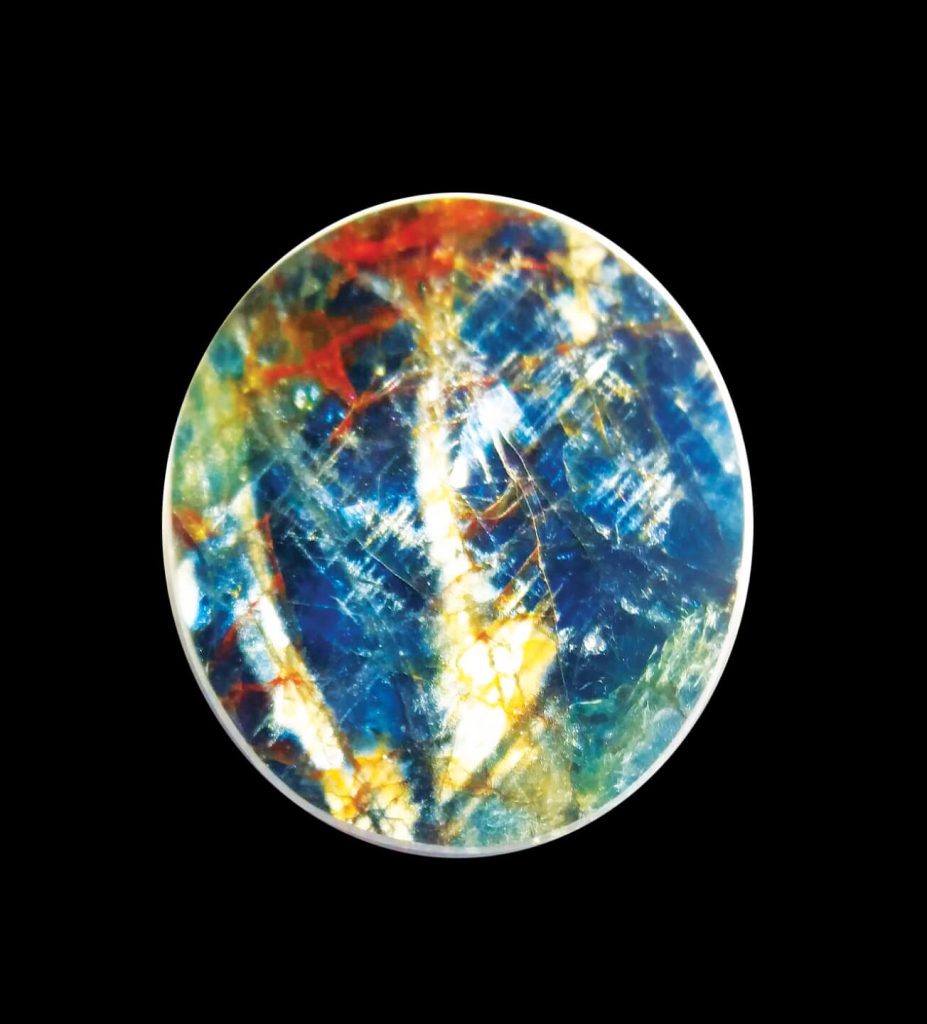
One very rare specimen that exhibits multiple colours.
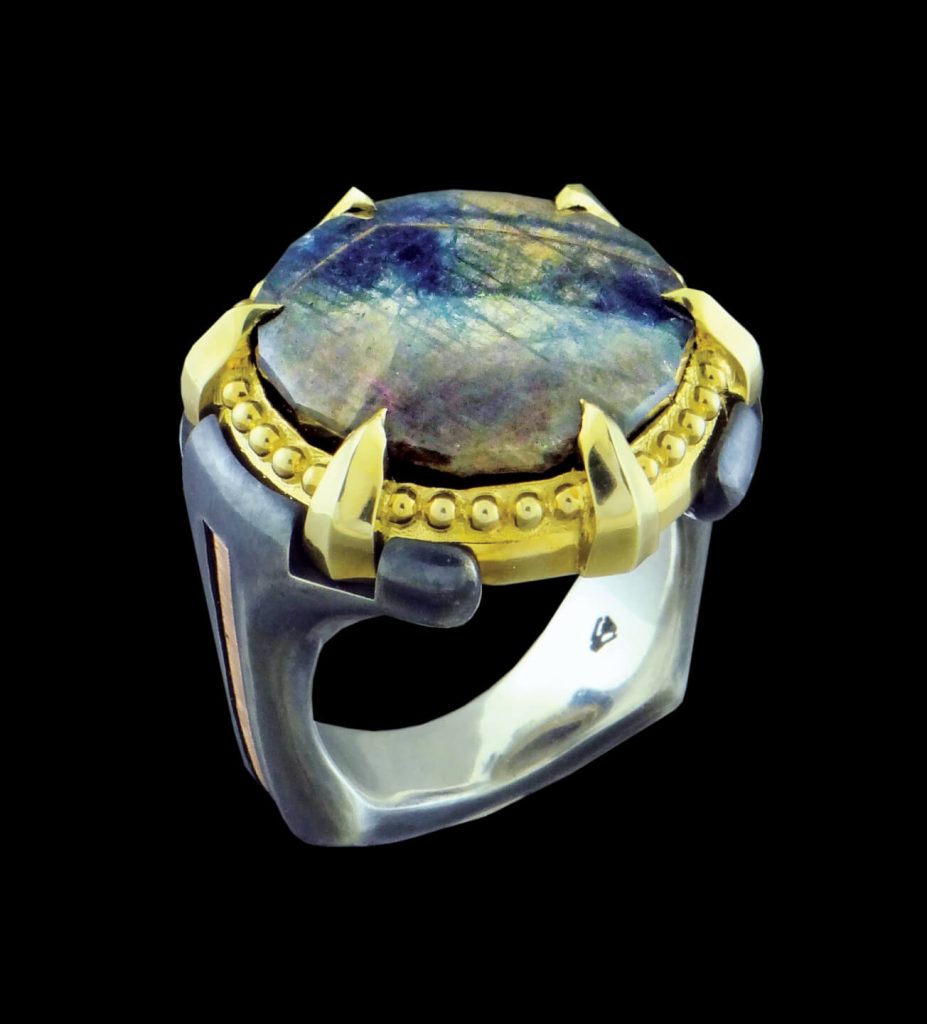
Award-winning ring set with a Gold Sheen™ sapphire by William Travis Jewelry (USA). (Photo: William Travis Jewelry)
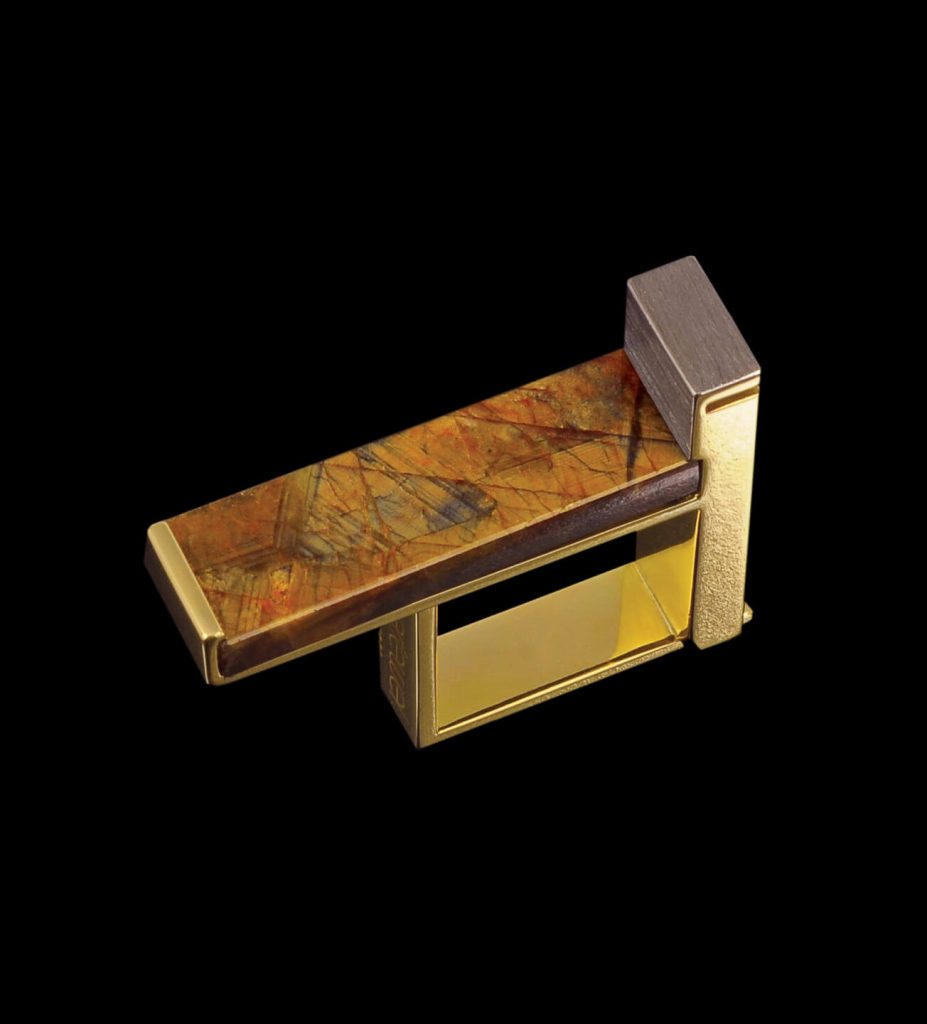
Gold Sheen™ sapphire set in gold by Baer Jewels (Hong Kong). (Photo: Baer Jewels)
Further reading: